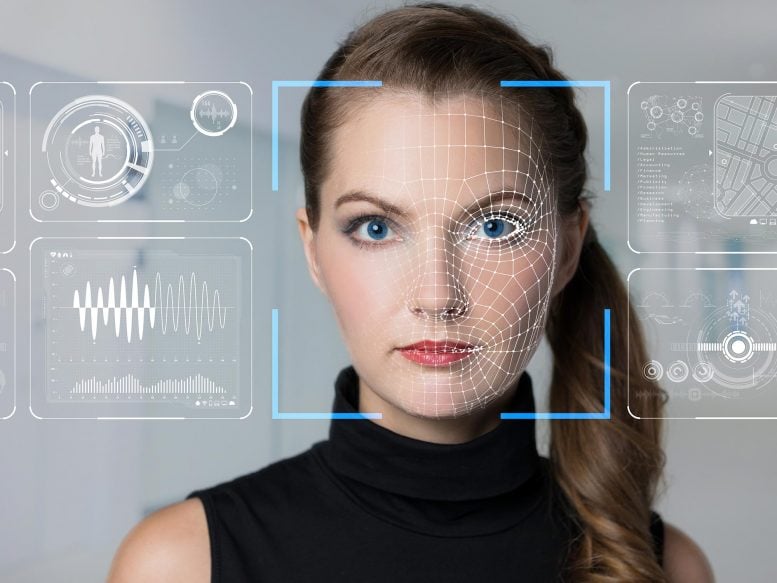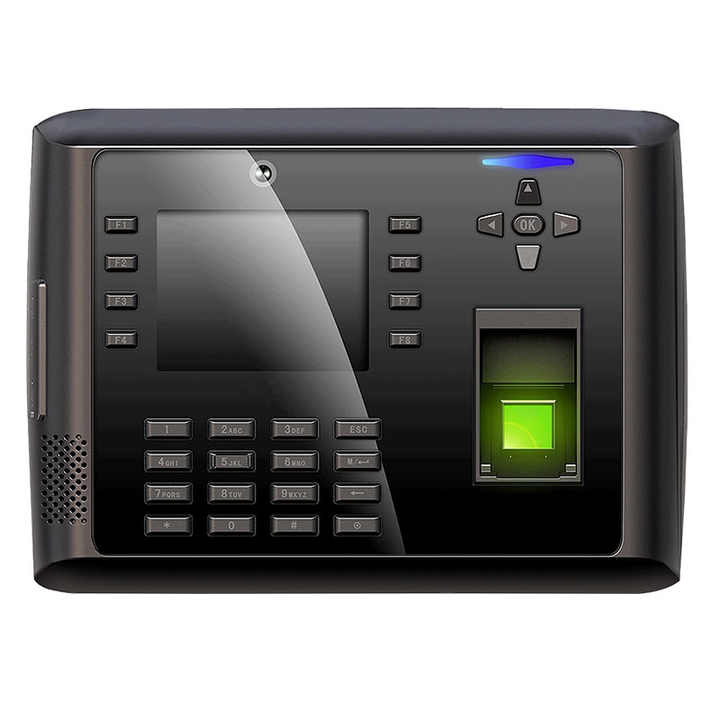Facial recognition software has rapidly evolved from a futuristic concept to a practical tool used in various fields. Its applications range from security and surveillance to user authentication and even social media tagging. Consequently, the availability of free facial recognition software has opened new opportunities for both individuals and businesses. Therefore, understanding the available options, their features, and potential applications is crucial for making an informed decision. This comprehensive guide explores the landscape of free facial recognition software, examining popular options, key features, and real-world applications. By delving into these aspects, you can harness the power of facial recognition technology without breaking the bank.
Popular Free Facial Recognition Software Options
Various free facial recognition software options offer unique features and capabilities. Understanding these options helps you choose the best fit for your needs. Therefore, exploring the popular free software is essential.

OpenCV
OpenCV (Open Source Computer Vision Library) is one of the most widely used tools for facial recognition. It provides a comprehensive set of libraries and modules for computer vision tasks, including facial recognition. OpenCV supports multiple programming languages, such as Python, C++, and Java, making it versatile for developers. One of its standout features is the Haar Cascade classifier, which enables highly accurate facial detection. By understanding the capabilities of OpenCV, you can leverage its powerful tools for various applications. Therefore, recognizing the value of OpenCV is crucial.
Dlib
Dlib is another popular option for free facial recognition software. It is a modern C++ toolkit containing machine learning algorithms and tools for creating complex software. Dlib excels in providing state-of-the-art facial recognition technology, offering features such as facial landmark detection and face alignment. It supports both C++ and Python, and its pre-trained models ensure high accuracy and efficiency. By understanding the strengths of Dlib, you can utilize its advanced features for robust facial recognition tasks. Therefore, recognizing the importance of Dlib is essential.
Face_recognition
Face_recognition is a Python library built on Dlib, designed to provide an easy-to-use interface for facial recognition tasks. It is touted as the simplest face recognition library in the world and requires minimal code to execute tasks such as face detection and matching. Face_recognition supports various tasks, including locating faces in images, finding and manipulating facial features, and recognizing and manipulating individuals. By understanding the capabilities of Face_recognition, you can perform a wide range of facial recognition tasks with ease. Therefore, recognizing the accessibility and functionality of Face_recognition is crucial.

Key Features of Free Facial Recognition Software
Free facial recognition software offers various features that enhance its usability and functionality. Understanding these key features helps you make an informed decision. Therefore, exploring the essential features is crucial.
Accuracy and Speed
Accuracy and speed are critical features of facial recognition software. High-accuracy software can reliably detect and identify faces, minimizing the risk of false positives and negatives. Speed is equally important, especially for real-time applications, where quick processing times ensure seamless performance. Free software like OpenCV and Dlib are known for their high accuracy and efficient processing. By understanding the importance of accuracy and speed, you can select software that meets your performance requirements. Therefore, recognizing these key factors is essential.
Versatility and Compatibility
Versatility and compatibility refer to the software’s ability to integrate with various systems and support multiple use cases. Versatile software can handle different types of facial recognition tasks, such as detection, identification, and tracking, making it suitable for a wide range of applications. Compatibility with popular programming languages and platforms ensures easy integration into existing systems. Options like OpenCV and Face_recognition offer extensive support for multiple programming languages, enhancing their versatility. By understanding the importance of versatility and compatibility, you can choose software that fits seamlessly into your workflow. Therefore, recognizing these features is crucial.

Real-World Applications of Free Facial Recognition Software
Facial recognition software has numerous real-world applications, benefiting various industries and enhancing everyday experiences. Understanding these applications helps you explore potential use cases for the software. Therefore, exploring real-world applications is essential.
Security and Surveillance
Facial recognition software plays a significant role in security and surveillance, enhancing public safety and crime prevention. It can be used to monitor public spaces, identify suspects in real-time, and provide access control in secure facilities. Integration with existing surveillance systems allows for automated monitoring and alerts, reducing the reliance on manual observation. By understanding the applications of facial recognition software in security and surveillance, you can leverage its capabilities to enhance safety measures. Therefore, recognizing the importance of this technology in security is crucial.
User Authentication
User authentication is another key application of facial recognition software, providing a secure and convenient method for verifying identities. Facial recognition can replace traditional authentication methods, such as passwords, to offer a seamless and secure login experience. This technology is widely used in smartphones, computers, and other devices, enabling quick and secure access to personal information. By understanding the applications of facial recognition software for user authentication, you can improve security and user experience in digital environments. Therefore, recognizing the value of facial recognition in authentication is essential.
Social Media and Entertainment
In the social media and entertainment industries, facial recognition software enhances user experiences by automating various tasks. It can be used to tag and organize photos, create personalized content, and enable interactive features in games and apps. Social media platforms employ facial recognition to automatically recognize and tag individuals, streamlining the process of sharing and organizing photos. By understanding the applications of facial recognition software in social media and entertainment, you can explore innovative ways to engage users. Therefore, recognizing the impact of this technology on user interaction is crucial.

Getting Started with Free Facial Recognition Software
Getting started with free facial recognition software involves understanding the installation process, basic usage, and available resources for learning. Therefore, exploring the initial steps is essential for successful implementation.
Installation and Setup
Installing and setting up free facial recognition software requires following specific instructions, depending on the chosen software. For OpenCV, you need to install the necessary libraries and modules using package managers like pip for Python. Dlib also requires installation of certain dependencies, such as CMake and Boost, before installing the library. Face_recognition, being a Python library, can be easily installed using pip. Detailed installation guides are available in the official documentation of each software. By understanding the installation and setup process, you can ensure a smooth start with the software. Therefore, recognizing the need for proper installation is crucial.
Basic Usage and Examples
Understanding the basic usage of facial recognition software involves familiarizing yourself with common functions and commands. OpenCV provides a range of tutorials and examples for performing tasks like face detection and recognition. Dlib offers extensive documentation and sample code for implementing facial landmark detection and face alignment. Face_recognition simplifies the process with straightforward commands to locate and recognize faces. Exploring these resources and practicing with examples helps you gain confidence and proficiency in using the software. By understanding the basic usage, you can effectively utilize facial recognition software for your needs. Therefore, recognizing the importance of hands-on practice is crucial.
Learning Resources and Community Support
Numerous learning resources and community support are available to help users master facial recognition software. Online tutorials, video courses, and forums provide valuable insights and solutions to common challenges. Websites like GitHub host repositories with sample projects and code, enabling users to learn from real-world applications. Engaging with the community through forums, discussion groups, and social media helps you stay updated on the latest developments and best practices. By understanding the available learning resources and community support, you can enhance your skills and knowledge in facial recognition technology. Therefore, recognizing the value of continuous learning is crucial.
Addressing Common Questions About Free Facial Recognition Software
Understanding common questions about free facial recognition software provides clarity and enhances your approach. Knowledge of these answers ensures better preparation and effective implementation. Therefore, exploring common questions is essential.
Is Free Facial Recognition Software Reliable?
Yes, free facial recognition software can be reliable, especially options like OpenCV, Dlib, and Face_recognition. These tools are widely used and proven to deliver high accuracy in various applications. However, the reliability may depend on factors such as the quality of input data, proper usage, and system configuration. Ensuring continuous updates and following best practices can enhance the software’s reliability. By understanding the factors affecting reliability, you can make informed decisions in using free facial recognition software. Therefore, recognizing the potential of these tools is crucial.
Can Free Facial Recognition Software Be Used for Commercial Purposes?
Many free facial recognition software options can be used for commercial purposes, subject to the terms and conditions of their licenses. OpenCV is released under the BSD license, allowing commercial use with minimal restrictions. Dlib is also licensed for commercial use under the Boost Software License. However, reviewing the specific license agreements and complying with any stipulated conditions is essential. By understanding the licensing terms, you can legally and ethically use free facial recognition software for your commercial projects. Therefore, recognizing the importance of license compliance is crucial.
Addressing Common Misconceptions About Free Facial Recognition Software
Addressing common misconceptions about free facial recognition software provides accurate information and dispels unwarranted concerns. Clearing up misunderstandings ensures an informed perspective. Therefore, exploring common misconceptions is important.
Misconception: Free Software Is Not as Effective as Paid Versions
A common misconception is that free facial recognition software is not as effective as paid versions. While paid solutions may offer additional features and support, free software like OpenCV and Dlib are highly effective and widely used in both academic and commercial settings. These free options provide robust performance, high accuracy, and extensive support, making them suitable for many applications. By understanding the capabilities of free facial recognition software, you can confidently use these tools for a range of tasks. Therefore, dispelling this misconception highlights the potential of free options.

Misconception: Facial Recognition Software Is Only for Experts
Another misconception is that facial recognition software is only suitable for experts and requires extensive technical knowledge. While some software may have a steep learning curve, many free options, like Face_recognition, are designed to be user-friendly and accessible, even for beginners. With abundant learning resources, tutorials, and community support, individuals with varying levels of expertise can effectively use facial recognition software. By understanding the accessibility of these tools, you can explore facial recognition technology regardless of your expertise level. Therefore, dispelling this myth emphasizes the inclusivity of facial recognition software.
Conclusion: Harnessing the Power of Free Facial Recognition Software
Harnessing the power of free facial recognition software involves understanding popular options, key features, real-world applications, and addressing common questions and misconceptions. Proper preparation, including recognizing the specific capabilities and limitations of tools like OpenCV, Dlib, and Face_recognition, ensures effective implementation.
Exploring critical aspects such as installation, basic usage, and available learning resources ensures comprehensive knowledge and practice. Recognizing the importance of addressing common questions and dispelling misconceptions enhances overall confidence and effectiveness in using facial recognition software.
By engaging with these elements, you can leverage the capabilities of free facial recognition software to enhance various applications, from security to social media. Therefore, whether you are an individual or a business, understanding the essential considerations and techniques for using free facial recognition software offers practical and valuable insights. Embrace the opportunity to explore and utilize this powerful technology, knowing you have the knowledge and resources to implement it effectively!


